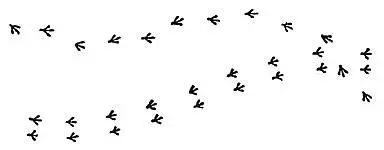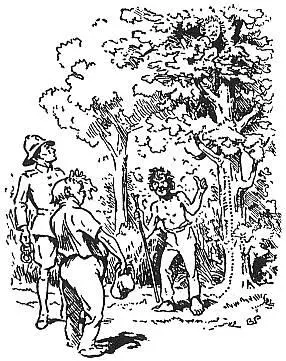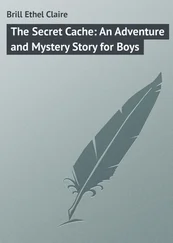Robert Robert - Scouting for Boys
Здесь есть возможность читать онлайн «Robert Robert - Scouting for Boys» весь текст электронной книги совершенно бесплатно (целиком полную версию без сокращений). В некоторых случаях можно слушать аудио, скачать через торрент в формате fb2 и присутствует краткое содержание. Жанр: Старинная литература, und. Описание произведения, (предисловие) а так же отзывы посетителей доступны на портале библиотеки ЛибКат.
- Название:Scouting for Boys
- Автор:
- Жанр:
- Год:неизвестен
- ISBN:нет данных
- Рейтинг книги:3 / 5. Голосов: 1
-
Избранное:Добавить в избранное
- Отзывы:
-
Ваша оценка:
- 60
- 1
- 2
- 3
- 4
- 5
Scouting for Boys: краткое содержание, описание и аннотация
Предлагаем к чтению аннотацию, описание, краткое содержание или предисловие (зависит от того, что написал сам автор книги «Scouting for Boys»). Если вы не нашли необходимую информацию о книге — напишите в комментариях, мы постараемся отыскать её.
Scouting for Boys — читать онлайн бесплатно полную книгу (весь текст) целиком
Ниже представлен текст книги, разбитый по страницам. Система сохранения места последней прочитанной страницы, позволяет с удобством читать онлайн бесплатно книгу «Scouting for Boys», без необходимости каждый раз заново искать на чём Вы остановились. Поставьте закладку, и сможете в любой момент перейти на страницу, на которой закончили чтение.
Интервал:
Закладка:
I once tracked a bicycle on a hard macadam road where it really made no impression at all, but by looking along the surface of the road for a long distance ahead of me, under the rising sun as it happened, the line it had taken was quite visible through the almost invisible coating of dew upon the ground. Standing on the track and looking upon it close to my feet I could not see the slightest sign of it.
The great thing is to look for a difficult track against the sun, so that the slightest dent in the ground throws a shadow.
“Casting” for a Lost Track
If you lose sight of the track you must make a “cast” to find it again. To do this put your handkerchief, staff, or other mark at the last footmark that you noticed, then work round it in a wide circle, say, 30, 50 or 100 yards away from it as a center—choosing the most favourable ground, soft ground if possible, to find signs of the outward track. If you are with a Patrol it is generally best for the Patrol to halt while one or perhaps two men make the cast. If everybody starts trying to find the spoor they very soon defeat their object by treading it out or confusing it with their own footmarks—too many cooks easily spoil the broth in such a case.
In making a cast, use your common sense as to which direction the enemy has probably taken, and try it there.
I remember an instance of tracking a boar which illustrates what I mean. The boar had been running through some muddy inundated fields, and was easy enough to follow until he turned off over some very hard and stony ground, where after a little while not a sign of his spoor was to be seen. A cast had accordingly to be made. The last footmark was marked, and the tracker moved round a wide circle, examining the ground most carefully, but not a sign was found. Then the tracker took a look round the
country, and, putting himself in place of the pig, said “Now in which direction would I have gone?” Some distance to the front of him, as the original track led, stood a long hedge of prickly cactus; in it were two gaps. The tracker went to one of these as being the line the boar would probably take. Here the ground was still very hard, and no footmark was visible, but on a leaf of the cactus in the gap was a pellet of wet mud; and this gave the desired clue. There was no mud on this hard ground, hut the pig had evidently brought some on his feet from the wet ground he had been travelling through. This one little sign enabled the tracker to work on in the right direction to another and another, until eventually he got on to the spoor again in favourable ground, and was able to follow up the boar to his resting-place.
Fitting Your Stride to the Track

These are the tracks of two birds. One lives generally on the ground, the other in bushes and trees. Which track belongs to which bird?
I have watched a tracker in the Soudan following tracks where for a time they were quite invisible to the ordinary eye in this way: While the track was clear he made his own stride exactly to fit that of the track, so that he walked step for step with it, and he tapped the ground with his staff as he walked along—ticking off each footprint, as it were. When the footprints disappeared on hard ground, or had been buried by drifting sand, he still walked on at the same pace, tap-tapping the ground with his staff at the spot where there ought to have been a footprint. Occasionally he saw a slight depression or mark, which showed that there had been a footprint there, and thus he knew he was still on the right line.
PATROL PRACTICES IN SPOORING
Prepare a tracking ground by picking a piece of soft ground, about ten or fifteen yards square, and making it quite smooth with a roller by sweeping it over. Part of the ground should be wet as if by rain, the other part dry. Make one boy walk across it, then run, then bicycle. Explain the difference in the tracks, so that the Scouts of the Patrol can tell at once from any tracks they may see afterwards whether a person was walking or running.
Send out a boy to make tracks and let the Patrol track him and notice when any other tracks override his,
showing what people or animals have passed since. The boy may wear tracking irons strapped to the soles
of his boots. Or he may have a few nails hammered into the sole or into the butt of his staff in a pattern that will make an unmistakable track.
Study the age of tracks by making fresh tracks a day later alongside the old. Notice the difference in appearance, so that the Scouts can learn to judge the age of tracks.
Make each Scout make a track of his shoe in soft ground and draw a diagram of it on paper.
Send Patrols along different roads, and let them return with reports on tracks seen—whether of people, or vehicles or animals.
Make plaster casts of tracks. Build a wall round track of mud. Pour water into mug or cup, slowly add plaster of paris, stir all the time, until like very thick cream—just pourable. Then pour into track. When almost dry, scratch on date, where found, etc. When absolutely dry, dig out carefully; wash.
GAMES IN SPOORING
Track Memory
Make a Patrol sit with their feet up, so that other Scouts can study them. Give the Scouts, say, three minutes to study the boots. Then leaving the Scouts in a room or out of sight, let one of the Patrol make some footmarks in a good bit of ground. Call up the Scouts one by one and let each see the track and say who made it.
Track Drawing
Take out a Patrol; set it on to a foot track. See which Scout can make the most accurate drawing of one of the footprints of the track. The Scouts should be allowed to follow up the track till they get to a bit of ground where a good impression of it can be found.
Spot the Thief
Get a stranger to make a track unseen by the Scouts. The Scouts study his track so as to know it again. Then put the stranger among eight or ten others and let them all make their tracks for the boys to see, going by in rotation. Each Scout then in turn whispers to the umpire which man made the original track—describing him by his number in filing past. The Scout who answers correctly wins. If more than one answers correctly, the one who then draws the best diagram of the footprint from memory wins.
Follow the Trail
Send out a “hare”, either walking or cycling, with a pocketful of chicken feed, nuts hells, confetti paper, etc., and drop a few here and there to give a trail for the Patrol to follow.
Or use Scout signs, scratched in the ground or formed from twigs, hiding a letter at some point.
CAMP FIRE YARN NO. 13
READING “SIGNS”, OR DEDUCTION
Putting This and That Together Instances of Deduction Sherlock-Holmesism

HINTS TO INSTRUCTORS
Instruction in the art of observation and deduction is difficult to lay down in black and white. It must be taught by practice. One can only give a few instances and hints, the rest depends upon your own powers of imagination and local circumstances.
The importance of the power of observation and deduction to the young citizen is great. Children are proverbially quick in observation, but it dies out as they grow older, largely because first experiences catch their attention, which they fail to do on repetition.
OBSERVATION is, in fact, a habit to which a boy has to be trained. TRACKING is an interesting step towards gaining it. DEDUCTION is the art of subsequently reasoning out and extracting the meaning from the points observed.
Читать дальшеИнтервал:
Закладка:
Похожие книги на «Scouting for Boys»
Представляем Вашему вниманию похожие книги на «Scouting for Boys» списком для выбора. Мы отобрали схожую по названию и смыслу литературу в надежде предоставить читателям больше вариантов отыскать новые, интересные, ещё непрочитанные произведения.
Обсуждение, отзывы о книге «Scouting for Boys» и просто собственные мнения читателей. Оставьте ваши комментарии, напишите, что Вы думаете о произведении, его смысле или главных героях. Укажите что конкретно понравилось, а что нет, и почему Вы так считаете.

![Роберт Баден-Пауэлл - Искусство скаута-разведчика[Scouting for boys ; Искусство Разведки для мальчиков]](/books/70572/robert-baden-pauell-iskusstvo-skauta-thumb.webp)









